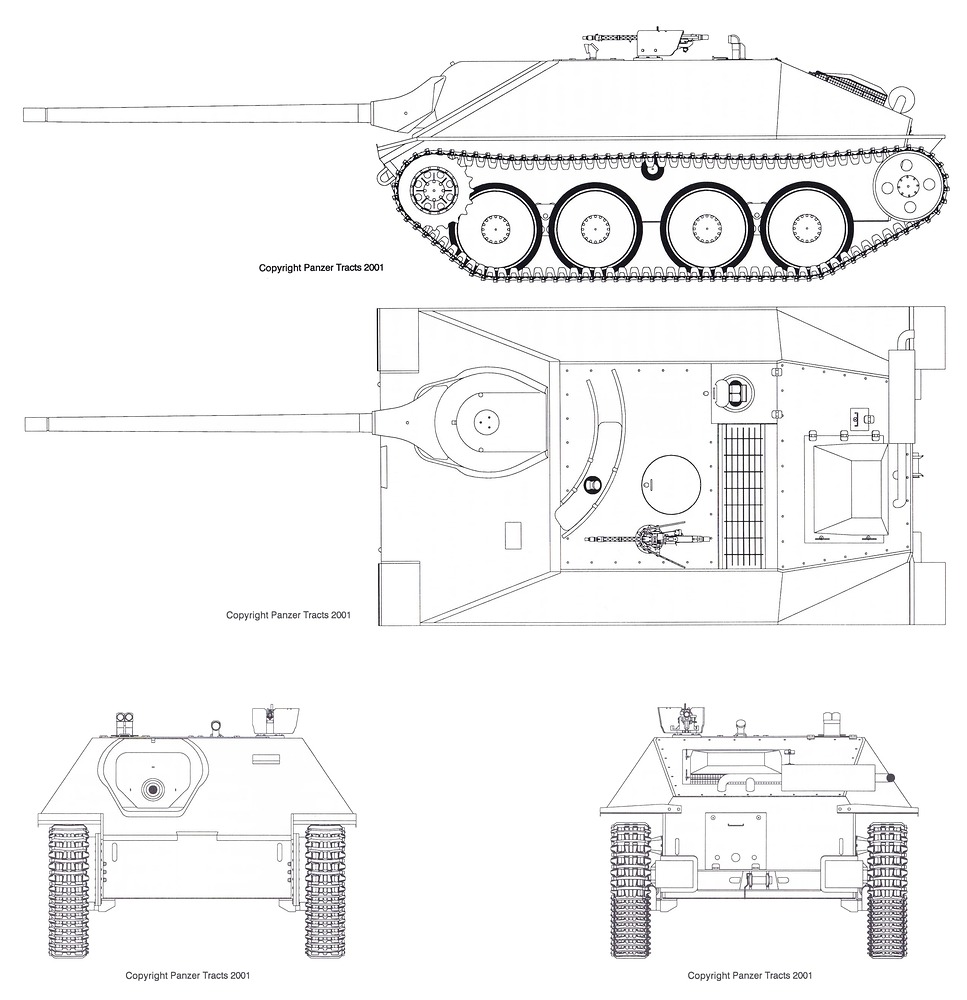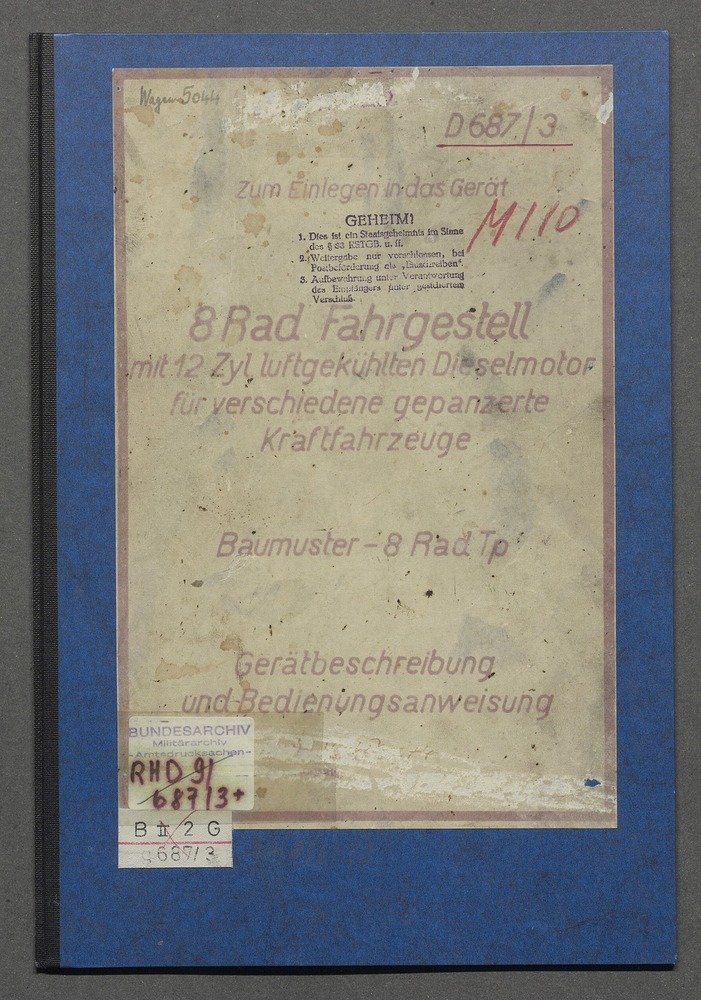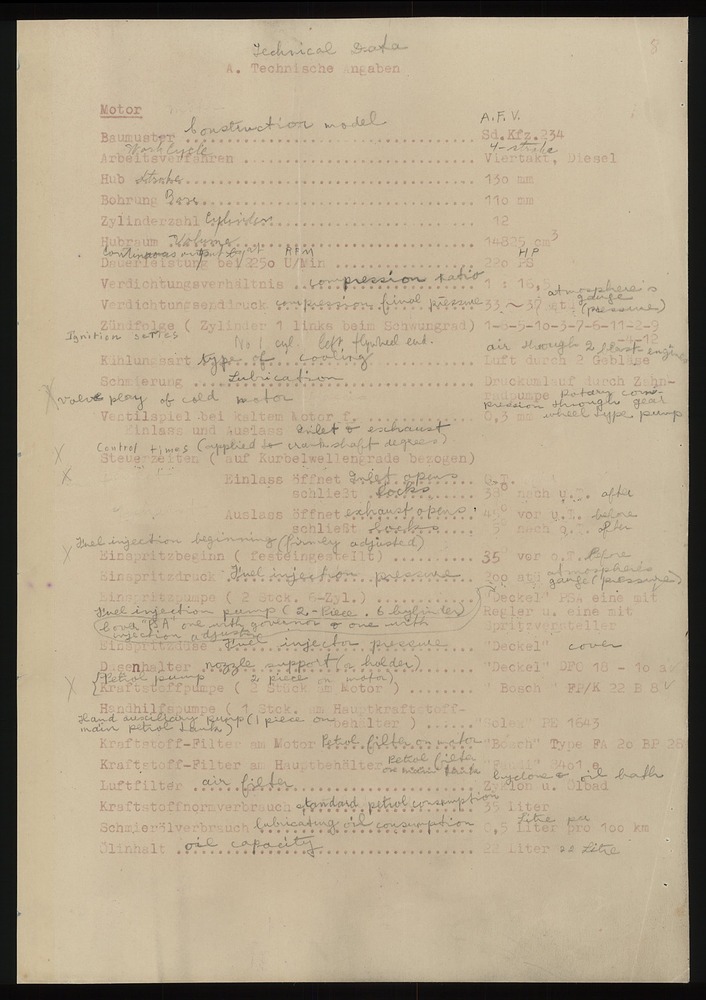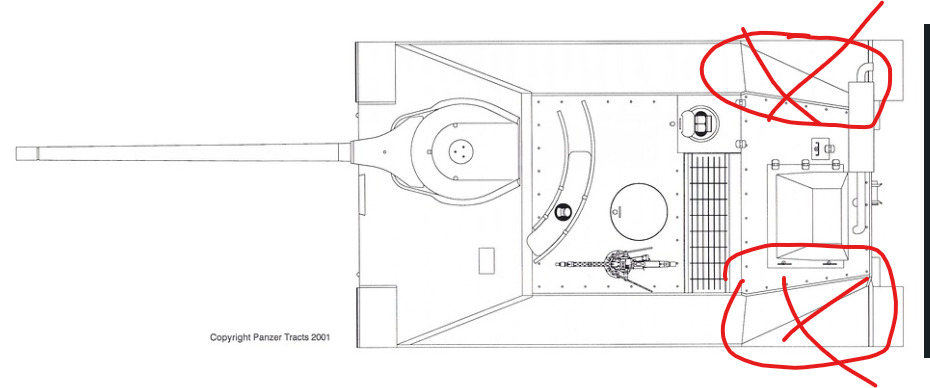- Yes, as a tech tree vehicle
- Yes, as an event vehicle
- Yes, as a premium
- No, this vehicle shouldn’t be added to War Thunder
Jagdpanzer 38 D - 2 prototypes
History
The Jagdpanzer 38(t) had proven itself to be a produceable solution for the need of a light self-propelled anti-tank gun, however production didn’t come without issues; Böhmisch-Mährische Maschinenfabrik (BMM) and Skodawerke had consistently fallen short of the plan of a gradual increase of up to 1000 produced per month with an actual peak production of 434 accepted in the month of January 1945.
On September 26th 1944, the Oberkommando des Heeres (OKH) announced that Altmärkische Kettenwerk GmbH (Alkett) were to start producing a new light Jagdpanzer 38(t) based on the BMM design with a planned production of 1000 per month.
Diesel engines replacing petrol engines had been an idea in the OKH since earlier in the war, however, it wasn’t until fuel supplies switched in favour of diesel later in the war was this idea taken seriously. It was decided the new Jagdanzer 38(t) was to be powered by an air-cooled diesel engine and for this Tatra already were producing a 207 horsepower diesel engine which would be a sufficiently powerful enough engine for a 14.5 ton vehicle and seen as a more desirable option than having to increase production of Praga’s water-cooled petrol engine used in BMM’s Jagdpanzer 38(t) as it was considered underpowered at 160hp.
On the 4th of October 1944, the Entwicklungskommission Panzer who were in charge of overseeing development of new Panzers as a part of the Panzerkommission had decided to reduce the number of different types of Panzers chassis down to 3 with those being the Panzer 38(t), Panther and Tiger. The Panzer III had ended production in 1943, with a planned phase-out of Panzer IV and StuG production by mid-year 1945 with companies that were building vehicles on these chassis to switch over to chassis based on the Panzer 38 (t) which included Alkett, the largest producer of the StuG series and Vogtländische Maschinenfabrik (VOMAG), the largest producer of the Jagdpanzer IV and Panzer IV/70
It was reported on the 20th of the November 1944 that the name of this new vehicle was Jagdpanzer 38 “D” for Deutsch and by this point, design of the chassis was completed and work on the superstructure and interior was nearly complete.
On the 23rd of January 1945, Dipl.-ing Michaels of Alkett in charge of the Panzer 38 D development had a meeting with the Entwicklungskommission Panzer to report on the state of the project. He explained that the Tatra Diesel engine didn’t fit into the Jagdpanzer 38(t)'s superstructure and the new engine would require new fittings and overall, the redesigns increased the weight of the vehicle from 14.5 to 16.7 tons and that the only parts that could be used from the Jagdpanzer 38(t) were the tracks and road wheels. Michaels promised that the new Jagdpanzer 38 D was the best vehicle for mass production and many different types of vehicles could be produced on the chassis, which include:
- Jagdpanzer 38 D with the 7.5cm L/48,
- Jagdpanzer 38 D with the 7.5cm L/70,
- Aufklärungspanzer,
- Aufklärungspanzer mit 2cm KwK 38,
- Aufklärungspanzer mit 7.5cm L/48,
- Aufklärungspanzer mit 12cm GrW 42,
- Flakpanzer 38 D “Kugelblitz”,
Variants not discussed in this meeting, which the designs would come later, include:
- Bergepanzer 38 D,
- Panzersturmhaubitze 38 D,
- Schützenpanzerwagon 38 D,
- 28cm Sturmmörser 38 D
To further simplify the design for production in Germany, the hull walls on the lower side of the hull of the Jagdpanzer 38 D were to be changed from angled inwards like on the Jagdpanzer 38(t) to be straight, this much simplified the attachment of the running gear, with this required much redesign with the mounting plates and housing of the side steering gears and their shafts and bearings were changed. The attachment flanges for the four carriers of the road wheel swing-arms were redesigned, so was the suspension for both the return rollers and road wheels, with even the road wheels themselves being redesigned. The wheel discs as well as the attachment flanges now met the wheel hubs and drive wheels evenly. The total length of the tracks was expanded from, 2123mm to 2183mm with the width of the track increasing to 420mm from 350mm and the wheel suspension was also strengthened along with a stronger steering gear designed by BMM.
The gearbox used on the Jagdanzer 38 D was the AK 5-80 with 5 synchronized gears by Zahnradfabrik Friedrichshafen AG (Z.F.) instead of the Praga-Wilson used on the Jagdpanzer 38(t) with 10 of these being built by March 1st 1945. The advantage of power transmission without the interruption of power was lost from the Praga-Wilson with the AK5-80. A strengthened version of the AK 5-80 was planned, however, this seems to not have come to fruition by the war’s end. The AK 5-80 allowed the Jagdpanzer 38 D with a final weight of 18 tons combat loaded to reach a top speed of 40 km/h and the Aufklärungspanzer variants with modified gear ratios to reach 52 km/h.
The 12 cylinder air-cooled TD 103 P diesel engine, which was related to the Tatra Typ 103 used in the Sd.Kfz 234 and Tatra 111 was the engine chosen to be installed in the Jagdpanzer 38 D. On the test bench for installation of the engine, air ducting and air temperatures at high torque and medium engine speed caused cooling problems. Despite this, installation of the TD 103 P was accepted in the Jagdpanzer 38 D. Furthermore, while testing driving the Jagdpanzer 38 D prototypes it was reported the engines worked without issues, but driving tests could only be conducted over short periods of time.
It was reported on the 23rd of March 1945, the 2 prototypes of the Jagdpanzer 38 D built by Alkett at Berlin-Borsigwalde were so close to being finished, that they could be made to run within 8 days after the gearboxes and steering gears were delivered. Because the vehicles had to be ready by the 15th of April, the delivery of 2 transmission was to be made on April 9th by trucks sent off on the 5th. These 2 prototypes were to be demonstrated to Hitler on his birthday on April 20th, however the deteriorating war condition prevented the demonstration.
Plans for production of up to 2000 vehicles based on the Jagdpanzer 38(t) and Jagdpanzer 38 D would ultimately never come to fruition with Germany’s surrender on the 7th May with it going in effect on the 8th with only 2 Jagdpanzer 38 D prototypes being anywhere near completion.
Technical Details
Jagdpanzer 38 D Alkett + BMM prototypes
Firepower:
Main Armament: 7.5cm PaK 42/1 L/70
Sight: Sfl Z.F. 1a 3x magnification, 8° FoV
Horizontal Guidance: ±12 to 15
Vertical Guidance: -8°/+15°
Secondary Armament: 2x MG 42, 1 Remote Control roof mount, 1 in the Mantlet
Ammunition: 40 rounds for 7.5cm L/70 and 600 for MG 42s
| Shell | Type | Muzzle Velocity | Pen at 10m at 0° |
|---|---|---|---|
| Sprgr 42 | HE | 700 m/s | 13mm |
| PzGr 39/42 | APCBC | 935 m/s | 192mm |
| PzGr 40/42 | APCR | 1120 m/s | 228mm |
Armour:
| Front | Sides | Rear |
|---|---|---|
| 60mm upper glacis at 60° | 20mm upper at 35° | 10mm engine deck at 67° |
| 60mm lower glacis at 40° | 20mm lower at 0° | 10mm rear at 10° |
Mobility:
Engine: TD 103 P
output: 207 Horsepower @ 2250 RPM
Forward Speed: 40 km/h
Reverse Speed: -8.8 km/h
Mass: 18.0 tons combat loaded
Turning circle: 12 metres
Horsepower per Ton: 11.5
Gearbox: AK 5-80
Number of gears: 5 forward 1 backward
Gear ratios:
| Gear | Ratio |
|---|---|
| 1 | 9.36 |
| 2 | 4.18 |
| 3 | 2.615 |
| 4 | 1.78 |
| 5 | 1 |
Sources
- Walter J. Speileberger, Panzer 35(t) and Panzer 38(t) and their Variants 1920-1945
- Thomas L. Jentz, Hilary L. Doyle, PANZER TRACTS No. 20-1 Paper Panzers, Panzerkampfwagen, Sturmgeschuetz, and Jagdpanzer
- Thomas L. Jentz, Hilary L. Doyle, PANZER TRACTS No. 23, Panzer Production from 1933 to 1945
- File no. XXVII-47 Interrogation of Dr. Stiele von Heydekampf President of the Panzer Kommission



